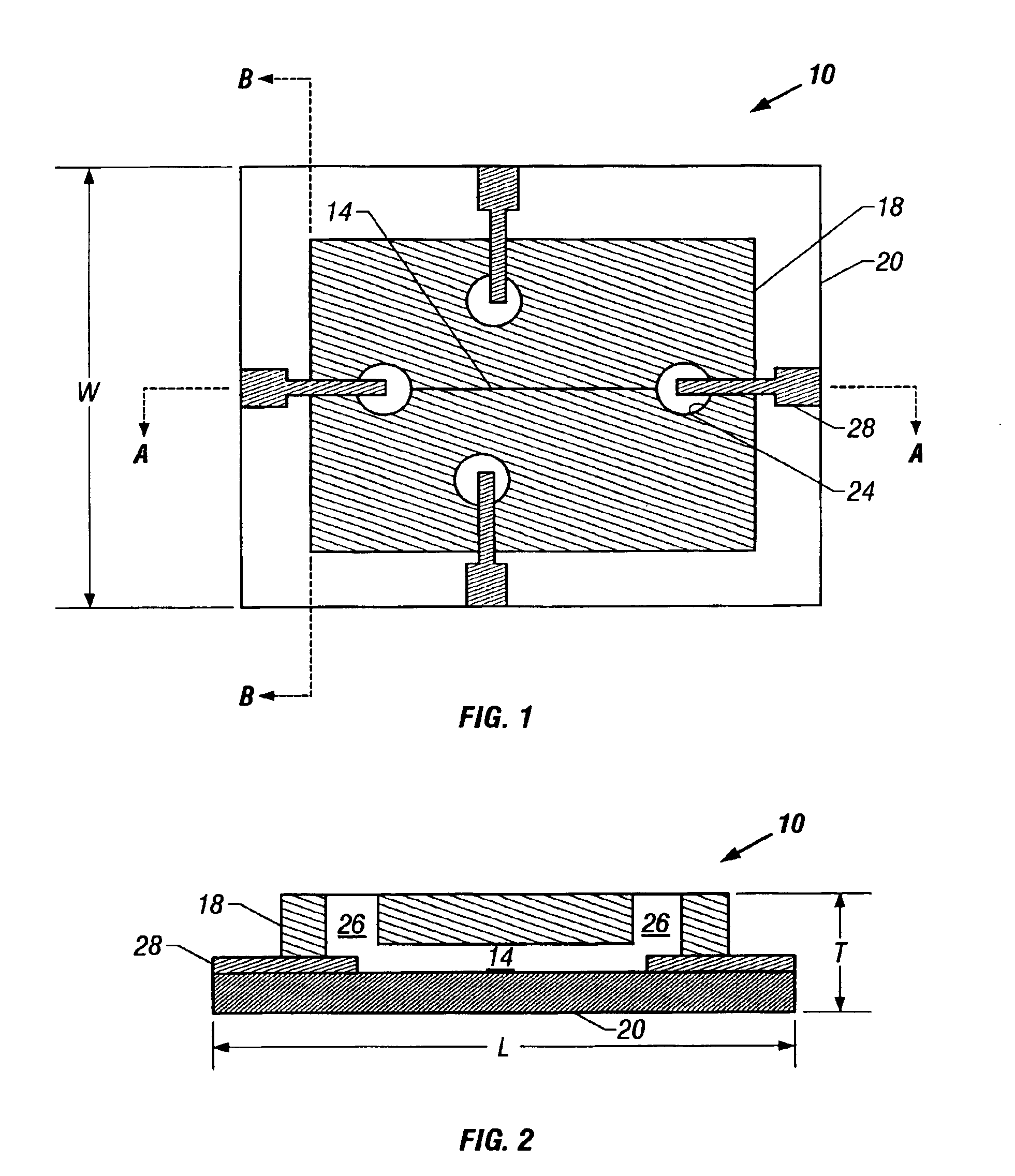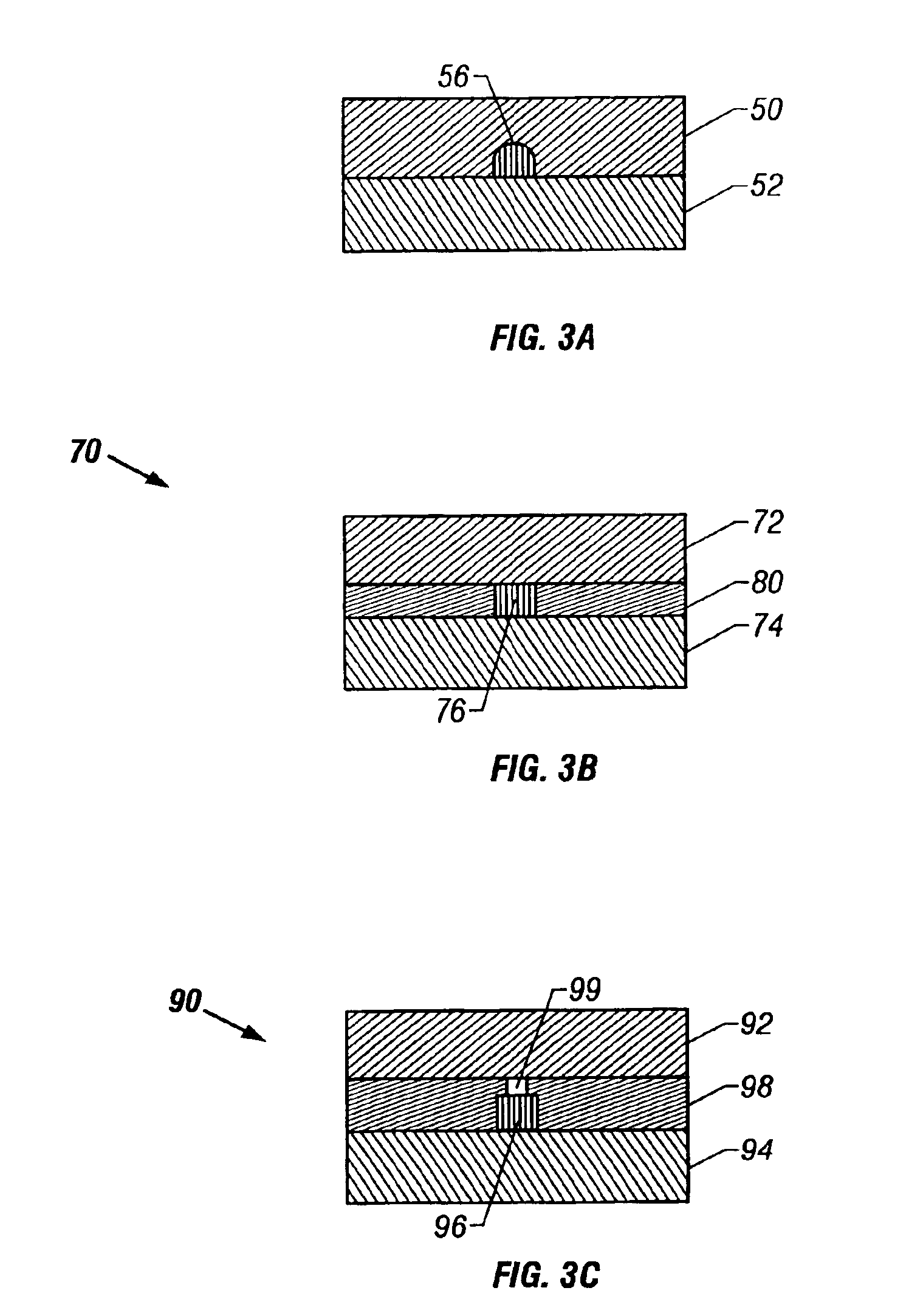Microfluidic chip having integrated electrodes
- Summary
- Abstract
- Description
- Claims
- Application Information
AI Technical Summary
Benefits of technology
Problems solved by technology
Method used
Image
Examples
examples
[0102]Various microfluidic devices in accordance with the present invention were tested. The tests included: (1) on-chip electrophoretic separations using electrically conducting ink electrodes; (2) field strength tests using electrically conducting ink-integrated labcards; (3) electrophoretic separations using wire electrodes having an electrically conductive ink coating and (4) heating using integrated ink electrodes.
[0103]On-chip Electrophoretic Separations
[0104]A microfluidic device as depicted in FIGS. 1 and 2 was fabricated and tested. In particular, electrically conducting ink electrodes were used as driving electrodes for electrophoretic separations for different assays and DNA sequencing. The device included a poly(methyl methacrylate) (PMMA) substrate and PMMA thin film cover thermally bonded to the substrate. The channels formed in the substrate were about 50 μm. in depth. A 10 to 30 μm ink coating was applied to the cover using screen printing technology to form the ink ...
PUM
| Property | Measurement | Unit |
|---|---|---|
| Width | aaaaa | aaaaa |
| Dielectric strength | aaaaa | aaaaa |
| Molar density | aaaaa | aaaaa |
Abstract
Description
Claims
Application Information
 Login to View More
Login to View More - R&D
- Intellectual Property
- Life Sciences
- Materials
- Tech Scout
- Unparalleled Data Quality
- Higher Quality Content
- 60% Fewer Hallucinations
Browse by: Latest US Patents, China's latest patents, Technical Efficacy Thesaurus, Application Domain, Technology Topic, Popular Technical Reports.
© 2025 PatSnap. All rights reserved.Legal|Privacy policy|Modern Slavery Act Transparency Statement|Sitemap|About US| Contact US: help@patsnap.com



